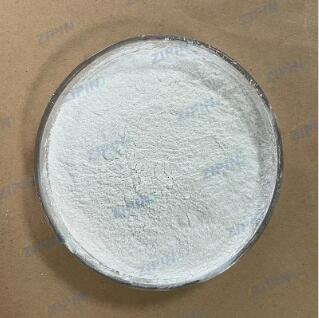Harnessing the Potential of Modified Curdlan: Tailoring a Versatile Polysaccharide for Specific Applications
2024-03-18
Curdlan, with its inherent versatility and unique properties, serves as a promising platform for innovation across industries. However, to meet the demands of specific applications, researchers have explored the modification and functionalization of Curdlan, unlocking new possibilities and enhancing its utility. In this blog, we'll delve into the intriguing realm of modified Curdlan, exploring how it can be tailored for specific applications and the techniques employed to achieve these modifications.
Understanding Curdlan Modification
Curdlan modification involves altering its chemical structure or properties to impart desired functionalities or enhance its performance in specific applications. These modifications can be achieved through various chemical, enzymatic, or physical methods, each tailored to meet specific requirements.
Techniques for Curdlan Modification
1. Chemical Modification: Chemical methods involve the covalent attachment of functional groups or molecules to Curdlan's backbone. Common chemical modifications include esterification, etherification, acylation, or grafting reactions, which introduce new functionalities or improve solubility, stability, or bioactivity.
2. Enzymatic Modification: Enzymatic methods utilize enzymes to catalyze specific reactions, such as glycosylation or deacetylation, to modify Curdlan's structure. Enzymatic modification offers precise control over the modification process and can result in products with enhanced biocompatibility or bioactivity.
3. Physical Modification: Physical methods, such as ultrasonication, irradiation, or mechanical treatment, can induce structural changes in Curdlan without altering its chemical composition. These modifications may alter Curdlan's rheological properties, gelation behavior, or particle size distribution, depending on the applied conditions.
Applications of Modified Curdlan
1. Drug Delivery Systems: Modified Curdlan can serve as a versatile platform for drug delivery systems, where tailored modifications enable controlled release, targeted delivery, or enhanced biocompatibility. Functionalized Curdlan nanoparticles, microparticles, or hydrogels offer promising solutions for various therapeutic applications.
2. Biomedical Materials: Modified Curdlan finds applications in biomedical materials, such as tissue engineering scaffolds, wound dressings, or implants. By incorporating bioactive molecules or adjusting physical properties, modified Curdlan materials can promote cell adhesion, proliferation, and tissue regeneration.
3. Functional Foods: Modified Curdlan can enhance the functionality and nutritional value of food products. By incorporating bioactive compounds or modifying Curdlan's structure to improve texture, stability, or sensory attributes, modified Curdlan enables the development of functional foods with added health benefits.
4. Biodegradable Packaging: Functionalized Curdlan-based materials offer sustainable solutions for biodegradable packaging. By incorporating antimicrobial agents, oxygen scavengers, or barrier coatings, modified Curdlan films can extend shelf life, reduce food waste, and minimize environmental impact.
Conclusion
Modified Curdlan represents a frontier in biomaterials and functional ingredients, offering tailored solutions for diverse applications across industries. By leveraging advanced modification techniques, researchers can customize Curdlan's properties to meet specific requirements, driving innovation and addressing complex challenges. As the field of Curdlan modification continues to evolve, the potential for novel applications and sustainable solutions remains vast, reaffirming Curdlan's status as a cornerstone of modern materials science and biotechnology.



